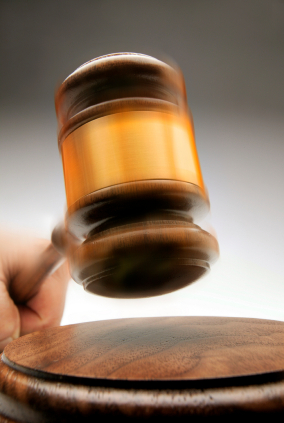Frequently a person who is arrested for driving under the influence will receive multiple traffic citations from the police officer. The number of tickets can cause some people to panic, believing they are charged with multiple DUIs. Generally, this is not the case.
DUIs are charged on tickets call a Uniform Citation and Complaint. These tickets are basically forms for the police officer to use in charging Illinois Vehicle Code violations. The form was developed by the Illinois Supreme Court. It lists all the most common vehicle code offenses with a citation to the statute.
Almost all police departments in Illinois use the Uniform Citation and Complaint, but the State Police (troopers) and Chicago Police Department use their own traffic ticket forms.
The Uniform Citation and Complaint has a box section with the most commonly charged vehicle code infractions, including improper lane usage, speeding, driving while suspended/revoked (DWLS and DWLR), no seat or safety belt, etc.
DUI is a very commonly charged offense, and thus it appears in box section. (As an aside, drunk driving is actually the number one most common crime in all state courts. Second place is domestic battery.)
The officer who has arrested a motorist for DUI would check the box for DUI, which is section 625 ILCS 5/11-501. He would sign his name and badge number on the bottom, and the ticket becomes the legal document that brings the defendant before the court on charges. Whereas a felony requires an indictment, the traffic ticket is the criminal charge in a DUI.
The statute provides six ways in which as person can be accused of DUI, sections (a)(1) – (a)(6). The ticket has a space for the officer to write the section that the driver is accused of violating.
A notation of (a)(1) indicates that the person is charged with operating a motor vehicle with an alcohol concentration in that person’s breath or blood of 0.08 or more.
If the officer writes section (a)(2), then the driver is accused of generally, driving under the influence.
An (a)(1) notation always means the driver submitted to a chemical test, usually a breathalyzer, which produced a result of 0.08, while section (a)(2) means the driver refused chemical testing.
If the driver receives a ticket for (a)(1) and (a)(2), then he is accused of having an alcohol concentration of 0.08 or more, and also generally being under the influence of alcohol. This does not mean the driver has two DUIs. Rather, the two tickets represent two ways of saying the same thing. A person is guilty of drunk driving if they are at 0.08 or higher, and also if they are generally under the influence. Being at 0.08 or higher is considered to be generally under the influence of alcohol. So, if a person blew a number on the breathalyzer machine of 0.08 or greater, then he will always get two tickets, one for (a)(1) and another for (a)(2).
On the other hand, if the driver refused the breathalyzer, then the police officer will issue him only one ticket, under section (a)(2). The officer cannot charge the driver will section (a)(1), because (a)(1) requires proof that the person’s alcohol concentration was 0.08. If there is no chemical test, then the officer does not have probable cause to make that charge.
Tickets for other sections, such as (a)(4) and (a)(6), are addressed elsewhere on this site, because they involve separate issues. Basically, these sections say that a person is guilty because he or she was under the influence of drugs, or combined influence of alcohol and drugs.
If the driver pleads guilty to both tickets, or goes to trial and is found guilty on both sections 11-501(a)(1) and 11-501(a)(2), then that person’s driver’s record will show only one DUI. The number of tickets for DUI is irrelevant. Theoretically, the police officer could issue 100 tickets, but it is still only one offense.
This rule is derived from the Constitution’s protection against double jeopardy. It would be a double jeopardy violation to give a person multiple convictions for the same physical act. This is known as the one-act, one-crime rule.
The officer issues the maximum number of tickets so that the prosecution has the greatest chance of a guilty verdict at trial. For example, the jury may say that a person does not seem generally under the influence according to section (a)(2), but because the person’s alcohol concentration was 0.08 or greater, then she is guilty of violating (a)(1).
I once had a jury find my client guilty of 11-501(a)(1) because the breathalyzer result was 0.08, and not guilty of 11-501(a)(2), because he did not seem impaired. And by comparison, I once had a court find my client not guilty of violating section 11-501(a)(1) despite a breathalyzer in excess of 0.08, the legal limit.
All in all, these cases can be won, regardless of a breath test. It is a matter of having some things go your way during trial.


